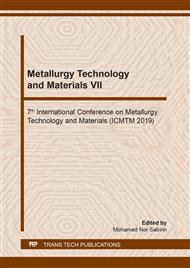p.116
p.121
p.128
p.135
p.141
p.149
p.155
p.161
p.167
Effect of Cutting Parameters on Tribo-Electric Charging in the Ultra-High Precision Diamond Turning of an RGP Contact Lens Polymer
Abstract:
This study present measurements of electrostatic charge that were performed in order to obtain the factors that influence the charging behaviour in the diamond turning process of advanced contact lens polymers. This can be used to decrease tool wear provided that tribo-electric tool wear is dominant in cutting contact lens polymers. The effective medical application of contact lenses is heavily dependent on their form accuracy and surface integrity. Tribo-electric charge which occurs when cutting polymeric contact lenses play a key role, having direct influence on the targeted form accuracy and surface quality of contact lenses. The research goal is to find out what parameter determine the amount of tribo-electric tool wear. The analysis of variance (ANOVA) was used to establish the statistical significance of the cutting parameters on Tribo-electric charge. The results revealed that depth of cut of cut strongly affects the Tribo-electric charge followed by cutting speed, feed rate and interaction between depth and speed.
Info:
Periodical:
Pages:
141-148
Citation:
Online since:
October 2019
Price:
Сopyright:
© 2019 Trans Tech Publications Ltd. All Rights Reserved
Share:
Citation:


